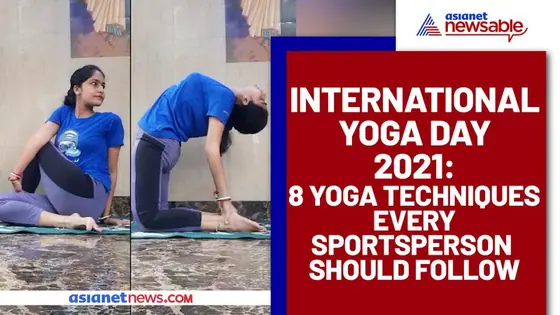
International Yoga Day 2021: 8 yoga techniques every sportsperson should follow
June 21 happens to be International Yoga Day. Yoga is practised by almost every human being on the planet, especially athletes and sportspersons. There, it's worth taking a look at some of the yogas that every sportsperson should perform.
The date is June 1, which happens to be International Yoga Day. When it comes to yoga, it is something that almost every person on the planet is familiar with and is an essential practice to keep oneself fit.

Yoga is also something that is highly associated with athletes and sportspersons. On this particular day, we look at eight crucial yoga techniques that every sportsperson should exercise.
Gomukhasana
According to Wikipedia, the technique involves 'kneeling by crossing the legs; the heel of the upper leg is tucked in under the lower thigh near the buttock. The arm on the lower leg side is raised, the forearm bent down, while the other arm reaches down behind the back, the forearm bent up, so the hands can clasp between the shoulder blades'.
Benefits: Helps in stretching the butt; improves shoulder flexibility; stretches chest, biceps, triceps, thighs; aligns spine.
Ardha Matsreyandasna
As per Wiki, the technique involves 'a foot is placed flat on the floor outside the opposite leg and torso twists toward the top leg. The bottom leg may be bent with the foot outside the opposite hip or extended with toes vertically'.
Benefits: Stimulates liver and kidney; stretches shoulders, hips and neck; stimulates digestive energy; earns relief from menstrual discomfort, fatigue and backache; aids in controlling asthma and infertility; increases appetite.
Paschimottanasana
Wiki explains that the technique involves 'bending forward from the hips without straining and grasping the feet or lower legs. A strap may be placed around the feet and grasped in the hands if the back is stiff.'
Benefits: Relieves stress and depression, stretches spine, shoulder, hamstrings; stimulates liver, kidneys, ovaries and uterus; aids in digestion; relieves menopause and menstrual discomfort.
Ustrasana
According to Wiki, the technique involves 'a deep backward bend from a kneeling position; the completed pose has the hands on the heels'.
Benefits: Stretches chest, abdomen and quadriceps; increases flexibility of spine; strengthens shoulders along with back muscles, arms and thighs; supports abdomen organs, pelvis and neck, helps in fat reduction, loosens vertebrate; posture improvement.
Matsyasana
Wiki explains the technique by stating that it 'is a backbend, where the practitioner lies on his or her back and lifts the heart by rising up on the elbows and drawing the shoulders back. The neck is lengthened, and the crown of the head is "pointed" toward the 'wall' behind the practitioner'.
Benefits: Relieves neck, throat and shoulder pain; tones neck and abdomen; stimulates belly and throat organs, strengthens back.
Baddha Konasana
The technique of this asan, as per Wiki, involves 'sitting position with both the legs outstretched forward, hands by the sides, palms resting on the ground, fingers together pointing forward, the legs are hinged at the knees, so the soles of the feet meet. The legs are grasped at the ankles and folded more until the heels reach the perineum. The knees move down to the ground, and with practice reach there; the body is erect and the gaze in front'.
Benefits: Stimulates organs of the abdomen and heart; stretches thighs, groins and knees; relieves depression, anxiety and fatigue; provides relief from menstrual discomfort.
Dhanurasana
A common asan technique involves the feet lifted in the air along with the chest, forming the shape of a bow with the help of the body, while the arms represent a bowstring'.
Benefits: Stretches almost every part of the body; strengthens back muscles and improves posture; stimulates abdomen and neck organs.
Vrikshasana
Another typical yoga posture involves lifting a leg, bending it by the knees and placing it sideways by the knee of the other standing leg. Meanwhile, the palms of the hands are joined together and raised above the head.
Benefits: Strengthen legs; improves neuromuscular coordination; helps in balance and endurance; improves concentration.
NOTE: Asianet News humbly requests everyone to wear masks, sanitise, maintain social distancing and get vaccinated as soon as eligible. Together we can and will break the chain #ANCares #IndiaFightsCorona